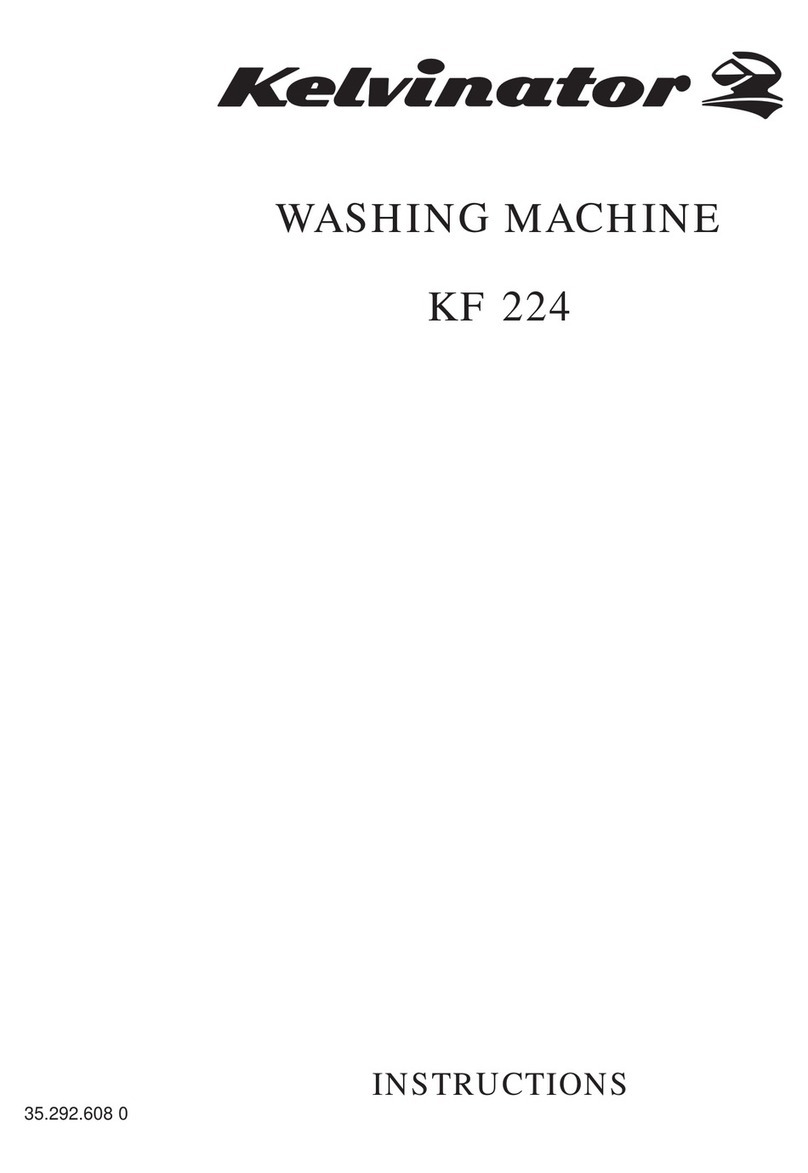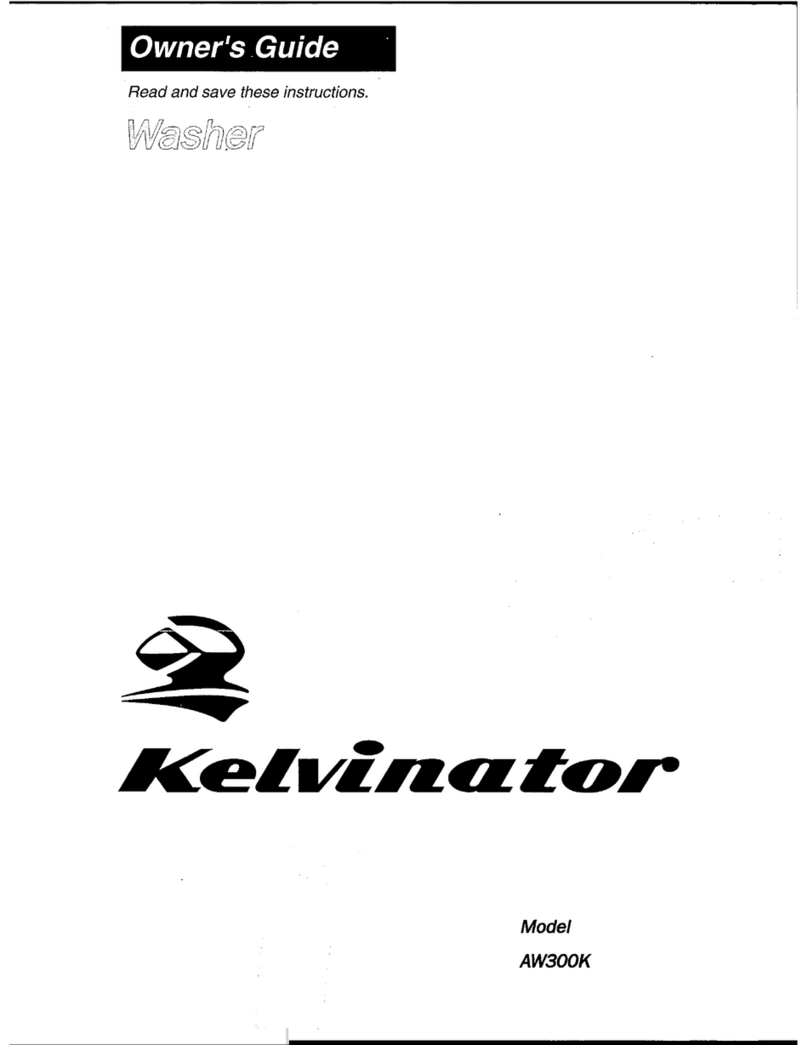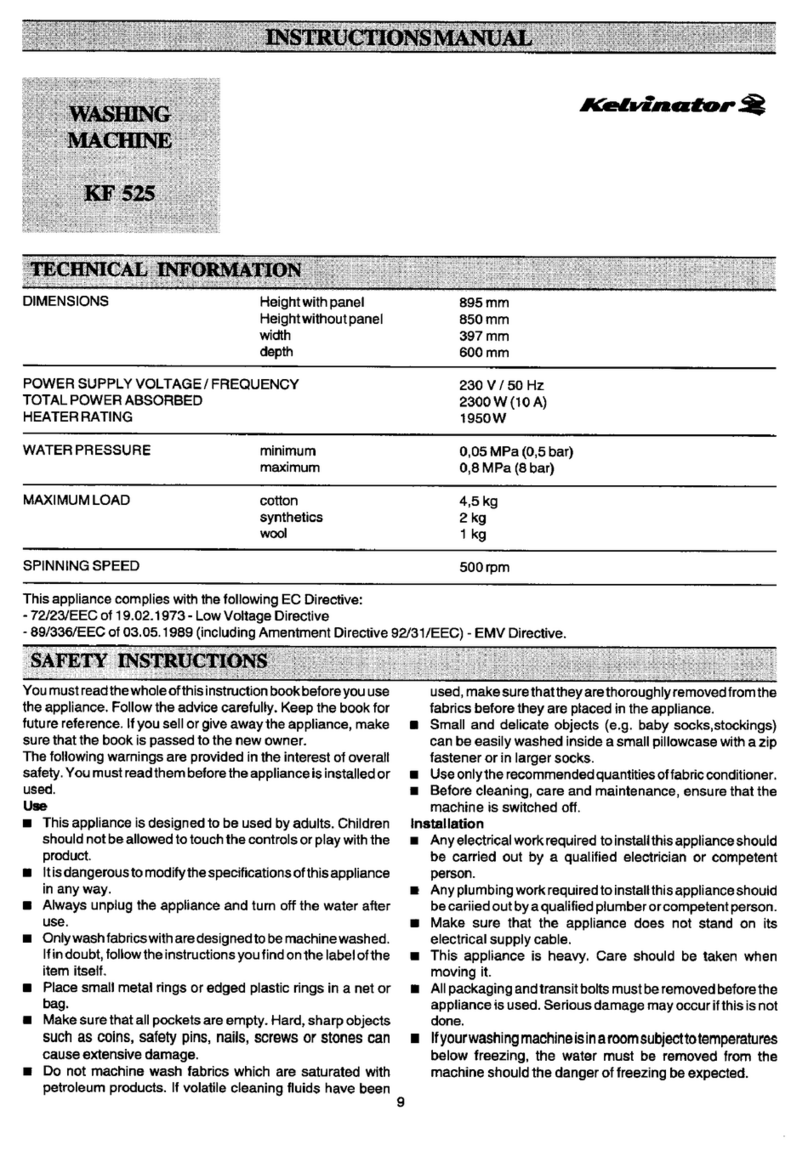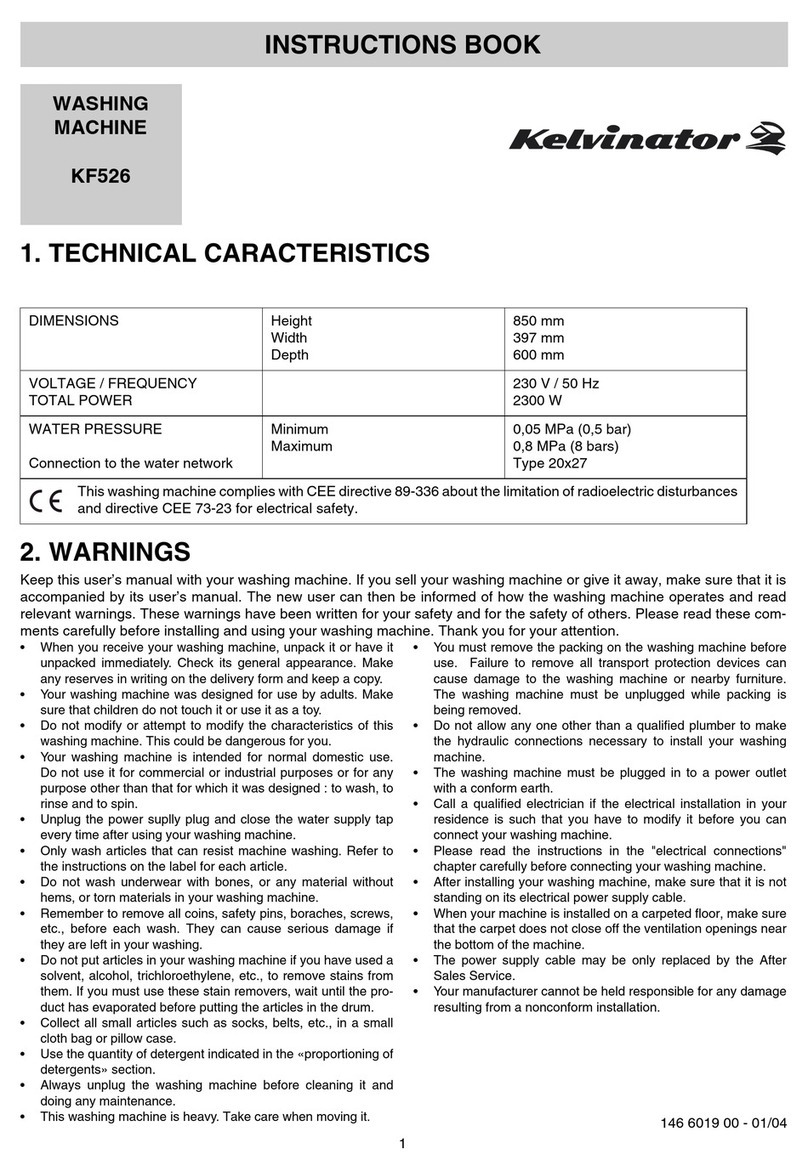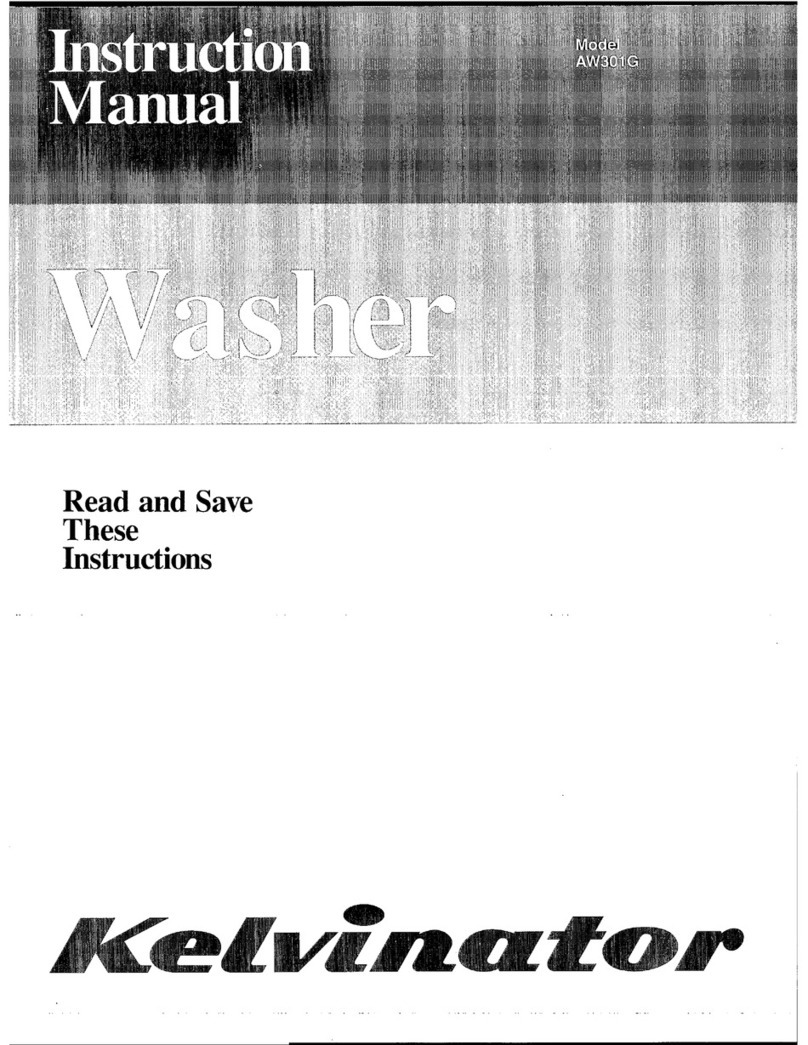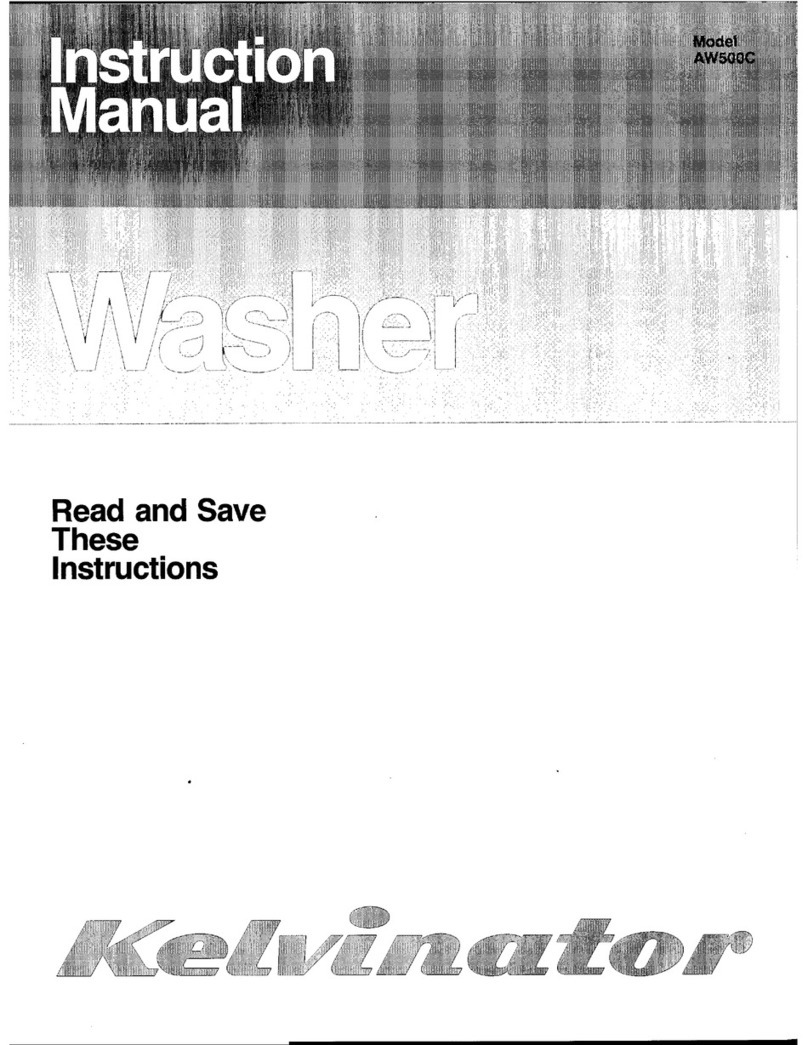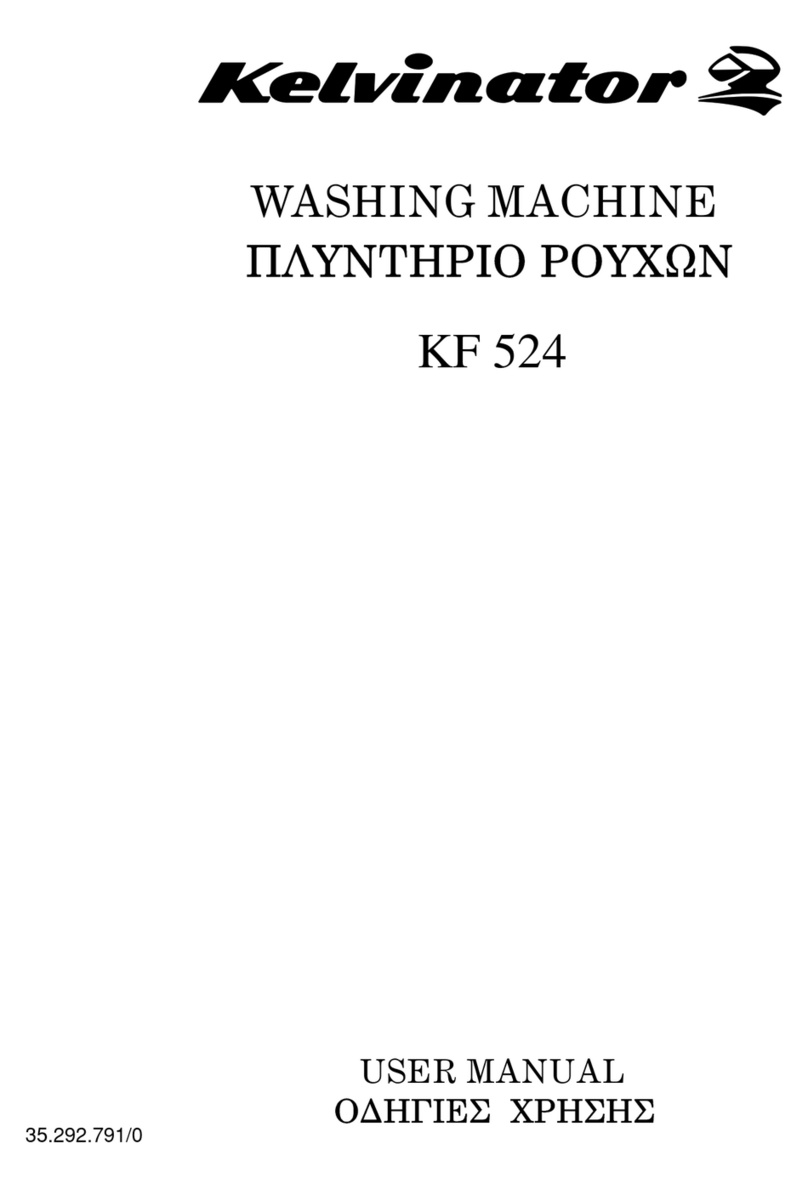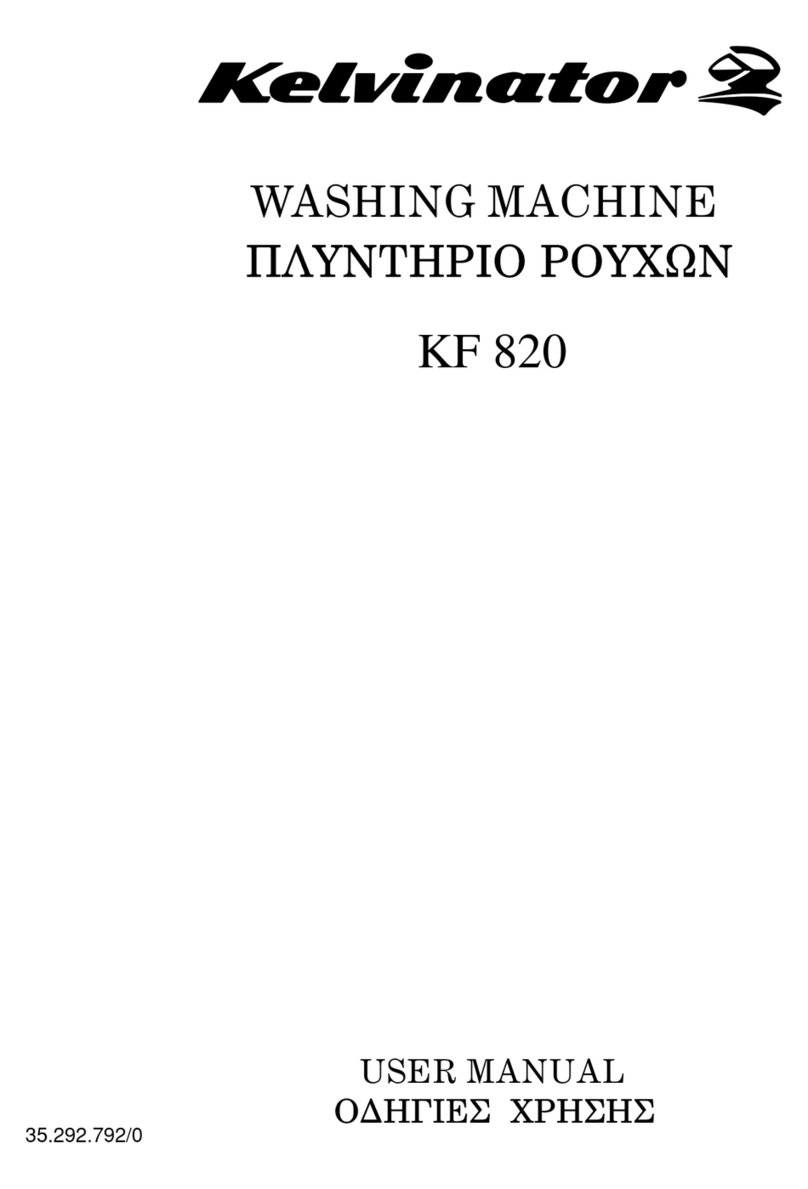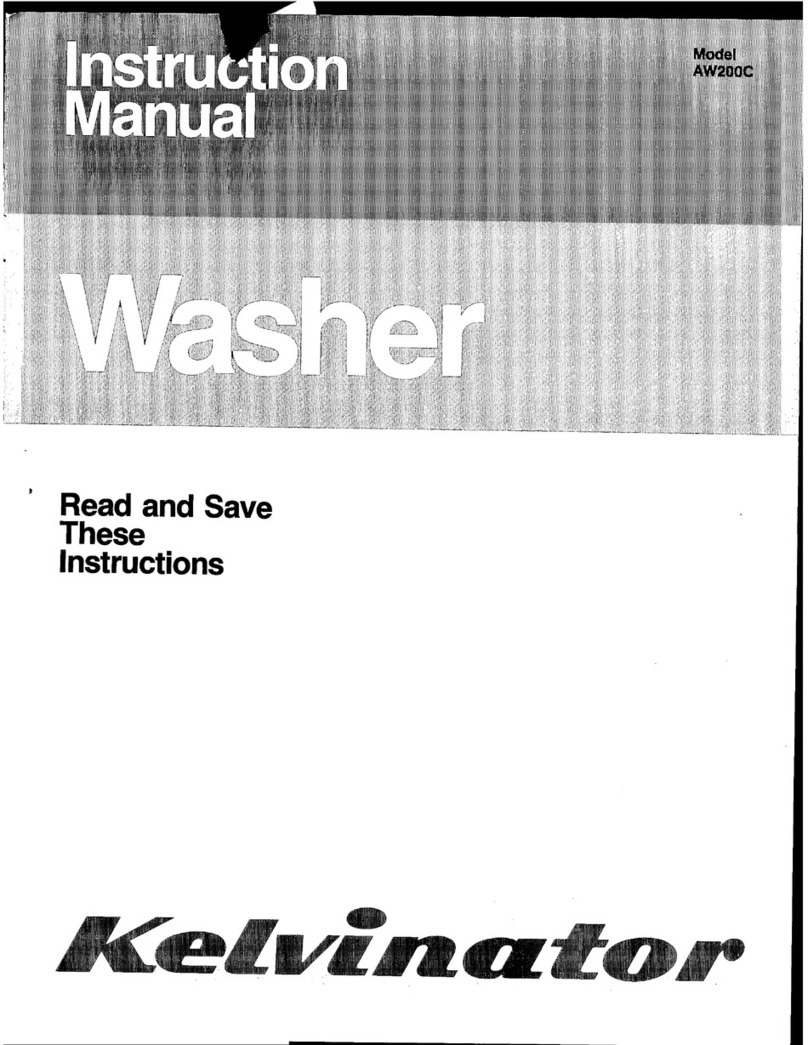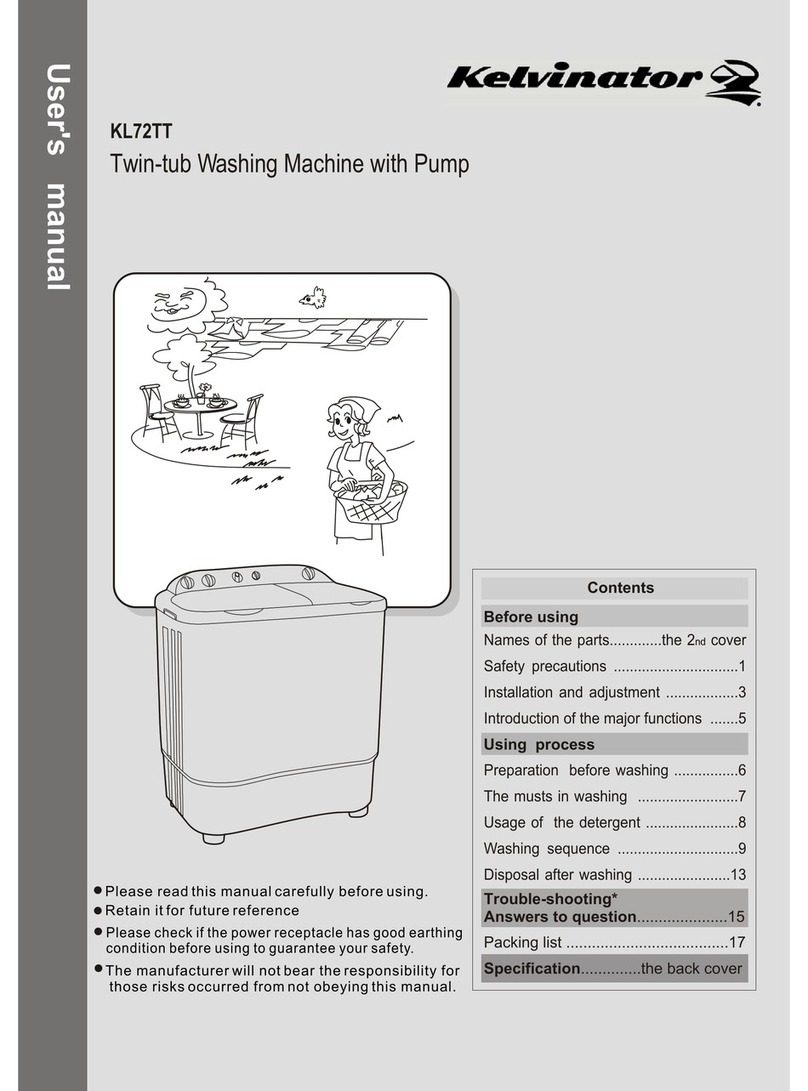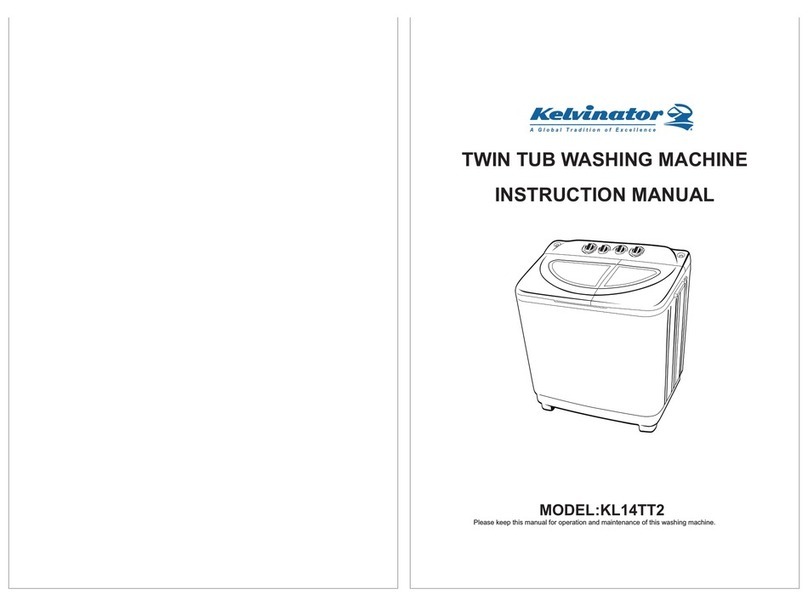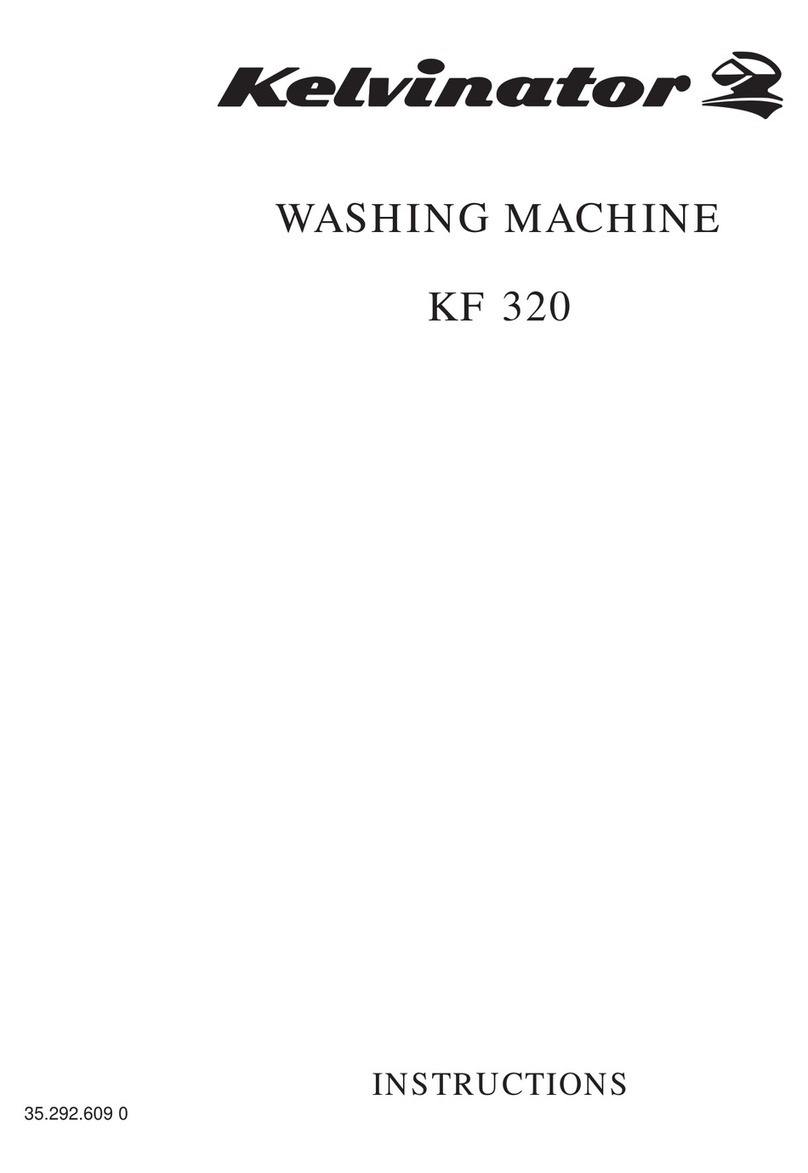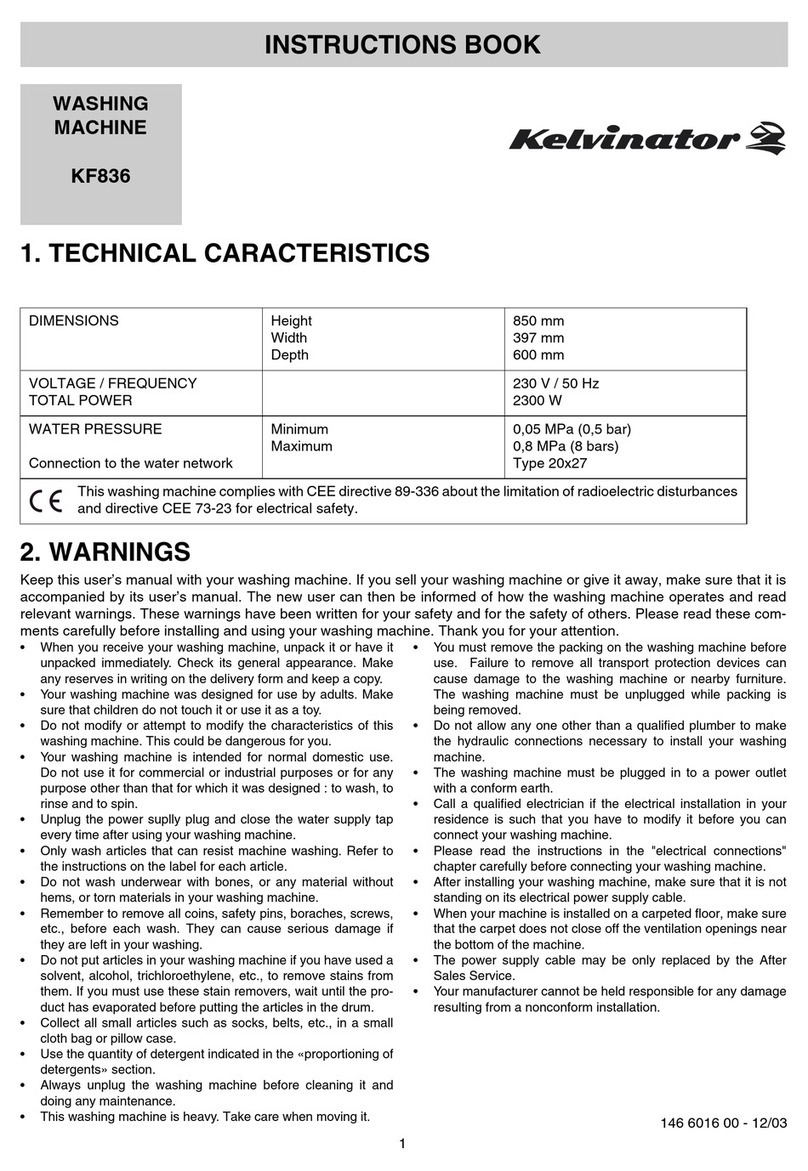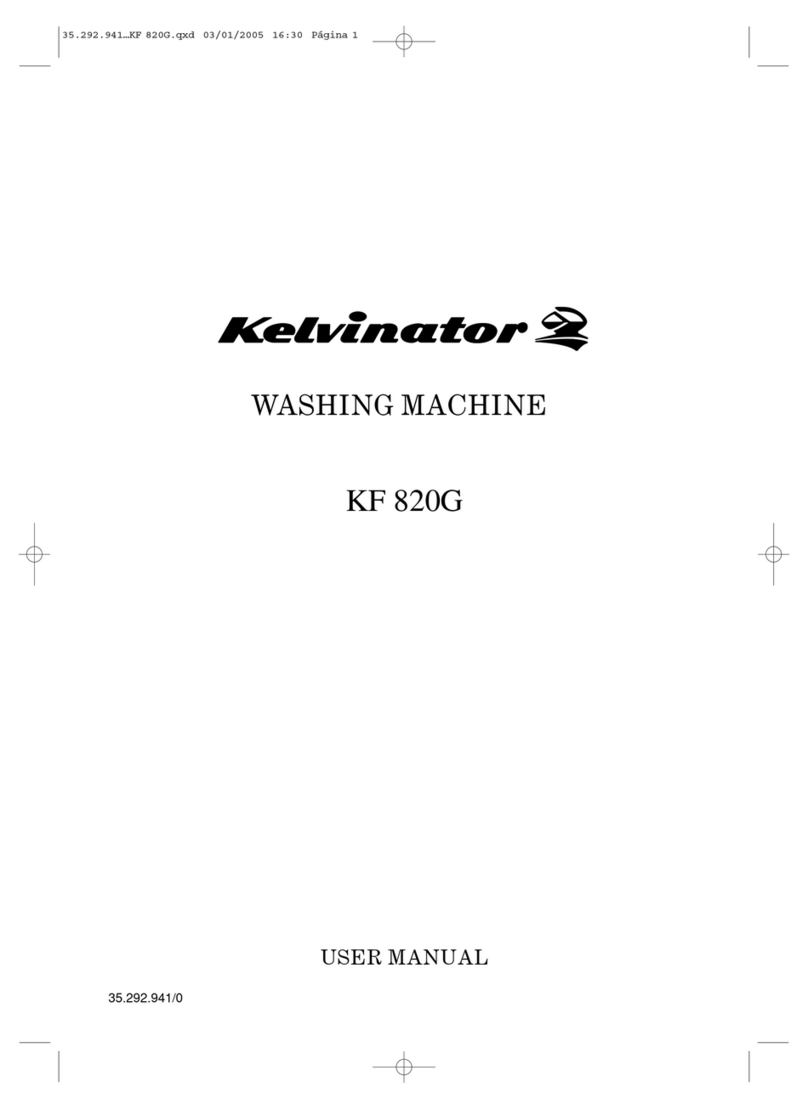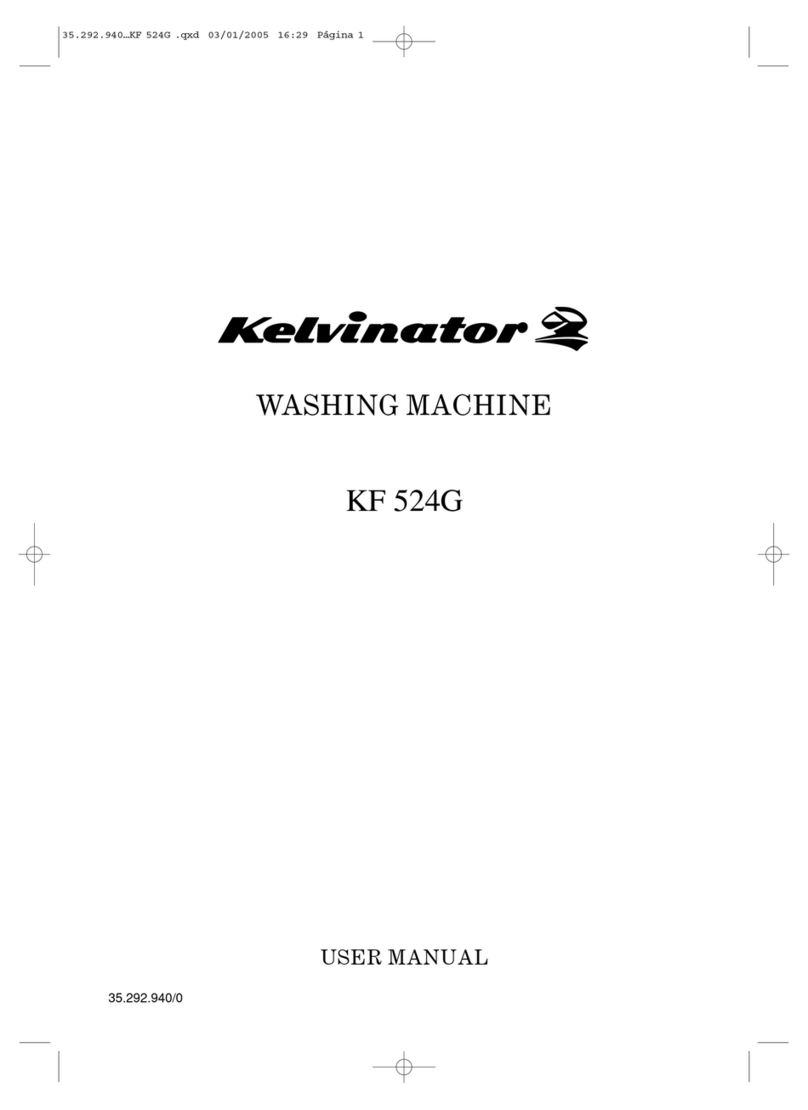13
Operatinginstructions
1. Place the laundry in the drum
lift up the lid of the machine
openthedrumwithyourtwohandsbypressingthebuttonA
and the two flapdoors till they disengage.
introducethelaundryintothedrum;closethedrumandthe
lid of the machine. Becareful :beforeclosingthelid
of your machine, make sure that
the drum flapdoors are correctly
closed :
the two flapdoors fastened
the button Apressed out.
2. Measure out the detergent
Measure out the amount of detergent recommended by the
manufacturerin themainwashcompartment( )
If you wish to carry out a prewash, pour the amount required
intothe prewashcompartment( ).
Do not exceed the MAX level.
3. Add the bleach agent
Youmayuse a bleach agent in allthewashing programmes.
However,makesurethatthefabricwithstandsthetreatment.
Bleachisautomaticallywashed downintothedrum.pour1/4
to 1 glass of 12° chl bleach into compartment marked ( )
beforeswitchingthemachineon.
Make sure that the level of the liquid never exceeds the
MAX level.
4. Add the fabric softener
Pour the softener, if required, into the compartment marked
().Do not exceed the MAX level.
5. Press the half load " " and/or the "800/400"
pushbuttons if required.
6. Select the temperature
Choose the temperature which corresponds to the chosen
programme,withthehelpoftheindicationsortheprogramme
table, according to the fibers and the fastness of the colours.
7. Select the programme
Choosetheprogrammeaccordingtothenatureandthedegree
of soil of the laundry.
Turn the programme selector clockwise to select the chosen
programme.
8. Starting of the programme
TheON/OFFpushbuttonenablestoswitch onyourmachine.
9. At the end of the programme
When the selected programme is over, the machine stops
automatically.The timer knob stops on the position" " for the
cottonprogrammes.Thesyntheticprogrammesendbyarinse
hold " ". You can finish these programmes by a spinning
(programmes6or13)oradraining(programme14).Depress
theON/OFFpushbuttonbeforedoingyour choice.
Aftereachwash,depresstheon/offpushbutton.Pressoffthe
otherpushbuttonsifnecessary;unplugthemachinefromthe
wall socket ; turn off the water tap.
A
Youareadvisednottoleaveyourlaundrytoolong,especially
when damp. Damp laundry produces moult and unpleasant
smells.
Moult stains cannot be removed.
Sort your laundry.
Studycarefullythechartinthisbookletexplainingthesymbols
used on clothes labels (see page 6).
Thefollowing points are particularly important :
alineunderthebowlmeansthatthegarmentcannotbewashed
using programmes for resistant fabrics such as cotton and
linen;
do not mix coloured garments with whites;
anticreasematerialslikepolyester/cottonshouldbetreatedas
synthetics;
non-resistant fabrics like acrylic and most curtain materials
should be treated as delicate fabrics;
thewoolprogrammeisdesignedspecificallyforpurenewwool.
Other types of wool and wool mixtures may shrink or felt if
machine-washed.
Woollen garments should be spun briefly immediately after
washing.
Pre-wash
Pre-wash is not normally necessary. Your new washing
machine combined with modern detergents will give perfect
washing results without pre-wash, thus saving energy, time,
wateranddetergent.
However,whenthelaundryisparticularlydirty(forexampleif
you have to wash mechanics' overalls or butchers' aprons),
you are advised to use pre-wash with a biological detergent.
HINTS AND TIPS
Temperatures
Wesuggestthatwhitecottonandlinen,ifitisnotexcessively
soiled,canbewashedat60°insteadof90°C.Thereshouldbe
noreductioninperformance,buttherewillbeanenergysaving
ofapproximately30%.
Thesameappliestoalesserextenttofastcolouredgarments.
Theyusuallyrequireatemperatureof60°Cbutiftheyarenot
excessively dirty, you will have satisfactory results at 40°C.
Garments with non-fast colours should not be washed at
temperatures above 40°C. If fast and non-fast colours are
washedtogether,theyshouldbetreatedasnon-fastcolours
andthereforethetemperatureshouldnotexceed40°C.
Resistant white and coloured synthetics can normally be
washed at 60°C but also in this case 40°C is sufficient if the
laundry is not excessively dirty.
Delicate synthetics, synthetics with non-fast colours and
woollengarments mustneverbewashedabove40°C.
As you already know, your washing machine can also wash
with cold water. However, it must be remembered that the
detergentscurrentlyonthemarkethavenotbeendesignedfor
cold washes and that in winter, when the water is very cold,
they may not dissolve adequately.
We suggest the use of liquid detergents.
How much laundry can be washed in one load?
Strictly speaking you should always weigh your laundry.
Thedrumwilltakeamaximumof5kgofcottonandlinen.For
synthetics and delicate fabrics, the maximum load is 2,5 kg
and for wool, 1 kg.
